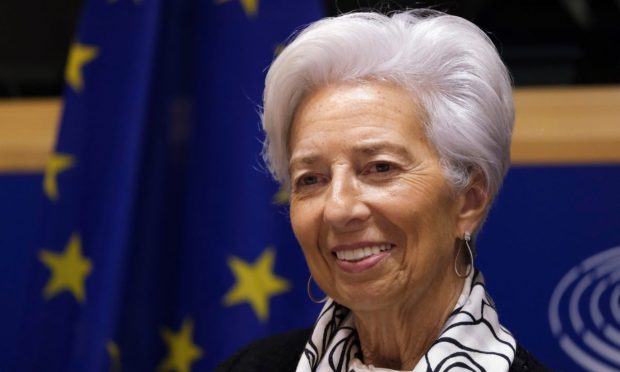Lagarde: ‘Low-Value, Low-Risk’ Digital Euro Payments Could Be Anonymous

In a video address as part of a high-level conference on the digital euro earlier this month, the president of the European Central Bank (ECB), Christine Lagarde, announced that the central bank digital currency (CBDC) project had received “strong political backing,” a year after kicking off its investigation phase.
However, she stressed that the competing policy objectives of ensuring privacy and preventing financial crime must be balanced in the next phase of the project, which the European Commission (EC) is expected to soon provide a legislative proposal for.
“Our work on exploring the underlying rationale, potential benefits and risks and core design principles of a digital euro has made good progress,” Lagarde said, adding that “the focus of our work now shifts to the concrete design and embedding the digital euro in a sound legal framework.”
Read more: How the Digital Euro Can Help Address Disintermediation, Sovereignty Issues
One of the key challenges that would need to be addressed is privacy, an issue that 43% of respondents to an EU public consultation ranked as the most important feature of any CBDC.
As such, Lagarde said the digital euro would “at least provide a level of privacy equal to that of current electronic payment solutions” for it to be attractive, while laying the responsibility on legislators to find “the right balance between the social value of privacy and the public interest in preventing illicit activities.”
While ruling out that the CBDC would mimic the full anonymity offered by cash, she said the ECB and the EC are exploring the possibility of replicating “some cash-like features and enabling greater privacy for low-value, low-risk payments, including for offline payments.”
By saying so, Lagarde echoed similar comments made by Federal Reserve Chairman Jerome Powell in September on the possibility of a digital dollar, in which he made clear that privacy, but not anonymity, would have to be built into any CBDC issued by the Fed.
This means that unlike bitcoin wallet addresses, for example, that use an alias and not a user’s personal information, the CBDCs to come are likely to hide transaction details from the public eye while maintaining a way for authorized parties to identify senders and receivers.
During the Hong Kong FinTech Week last month, the Governor of the People’s Bank of China Yi Gang also touched upon the issue.
Pointing out that “anonymity and full disclosure are not as simple as black and white,” Yi said that transaction data for the digital yuan — China launched the pilot in January of this year — is cryptographically secured and should not be identifiable without legal authorization.
However, without a legitimate need to uncover who received or sent a specific payment, he said that the e-CNY ensures privacy protection through “managed anonymity.”
Learn more: China Central Bank Governor Says Digital Yuan Has ‘Managed Anonymity’
Lagarde’s “cash-like features” and Yi’s “managed anonymity” leave open a range of possibilities for CBDCs that are otherwise foreclosed if ironclad identity verification is enforced. Transferable gift cards, pocket money for children and various informal economic functions that are enabled by physical cash could all be digitized under such a system.
And despite admitting that there are important technical and policy choices that the European Union would need to make before it can issue a CBDC, Lagarde was overall optimistic about the prospect.
Without one, she suggested that digital assets not issued by a central bank may “harbor instability and confusion among citizens about what is money and what is not.”
As discussed in the latest PYMNTS Blockchain Payments Tracker entitled “Is Regulation Friend Or Foe For Blockchain?,” the EU has moved to better define different types of digital currency in the Markets in Crypto Assets (MiCA) regulation which is nearing a final vote.
Get the report: PYMNTS Blockchain Payments Tracker: Is Regulation Friend Or Foe For Blockchain?
For all PYMNTS EMEA coverage, subscribe to the daily EMEA Newsletter.
